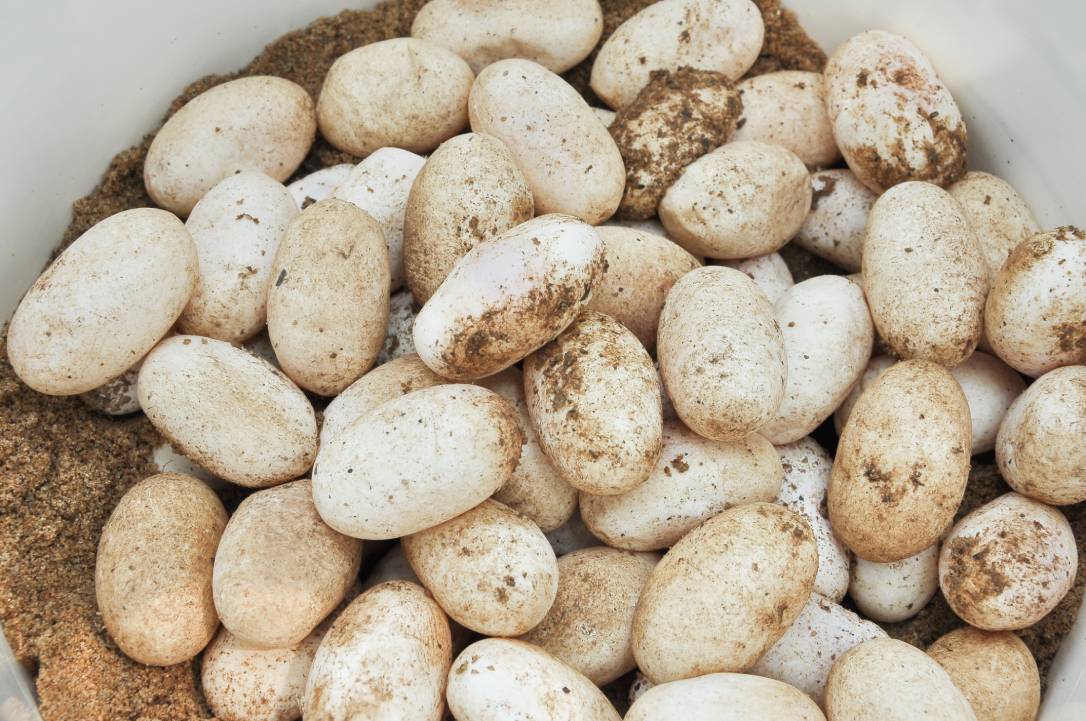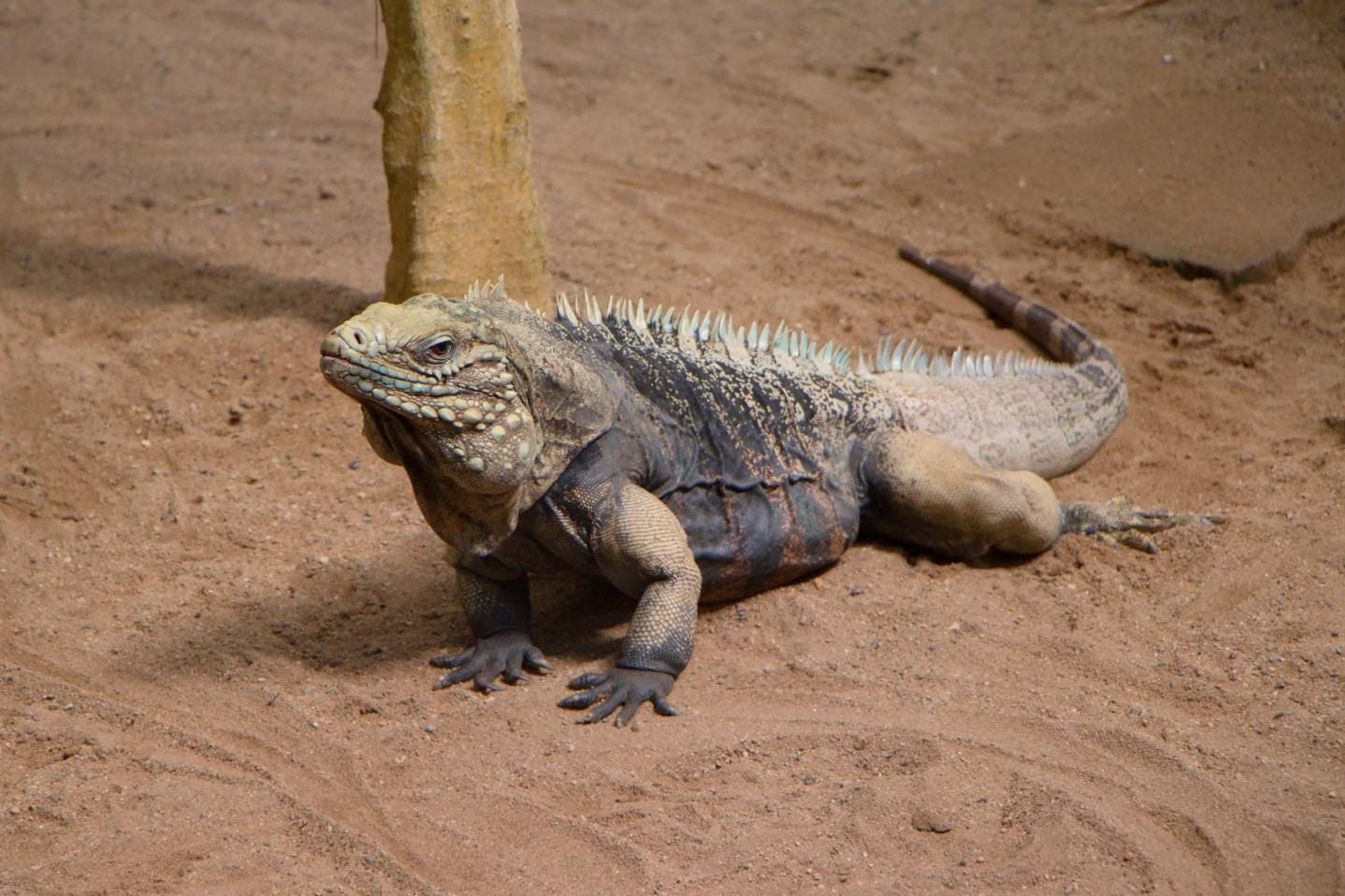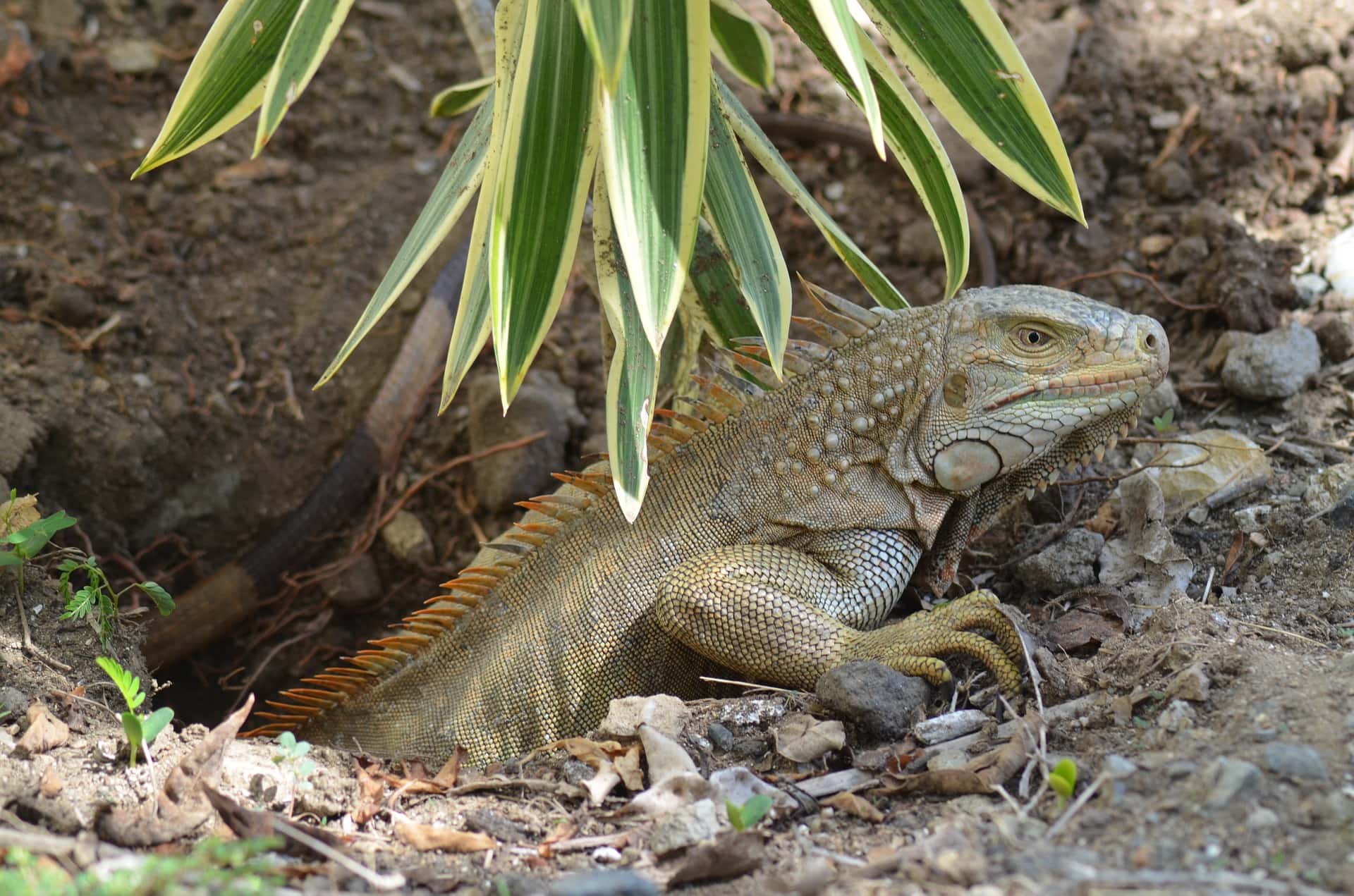Click to Skip Ahead
When you think of iguanas, you probably picture a green iguana (Iguana iguana). Although there are 35 recognized species of iguanas, the green iguana, or American iguana, is the most popular type in the United States. These reptiles are common pets that are known for their intelligence and ability to bond with their owners. While their name suggests that they are always green, they can actually be various colors. Selective breeding can produce iguanas that are shades of red, green, blue, black, orange, and yellow.
Like many other reptiles, iguanas reproduce by laying eggs. The number of eggs will vary depending on the species of iguana, but on average, it is around 40. Read on to learn more about the green iguana and their reproduction cycle.

Green Iguanas Mating in the Wild
When green iguanas are between 2 and 4 years old, they reach sexual maturity. In the wild, these reptiles will mate during the dry season in order for their offspring to hatch in the wet season. During this breeding season, one male can mate with several females.
Each female can save sperm in their body for several years after mating with one male, in order to fertilize future eggs if they cannot find a partner. The breeding season in the wild occurs from late fall through spring. Breeding can also take place at any time of the year if the weather conditions are right.

Green Iguanas Mating in Captivity
Once a female green iguana reaches sexual maturity, she will start to lay eggs. She will then lay eggs once a year for the rest of her life. Iguanas can live up to 20 years in captivity, so that’s a lot of eggs! Female iguanas will lay eggs even if they are alone in their habitats and have not had any contact with males. These eggs will be unfertilized and can be removed from the habitat and discarded.
It can be difficult to breed iguanas in captivity. The breeding season is affected by the region in which you live, how much sunlight the iguana receives, and how many other iguanas they live with. During the breeding season, captive iguanas can become aggressive with their owners. Biting and tail-whipping are usually seen, and the iguanas can become agitated when handled by humans.
Even in zoos, with the correct diet, temperature, and ideal conditions, it is challenging to breed iguanas. It’s also something that is not advised. Unless you are skilled in reptile care and breeding, iguanas should not be bred in captivity by novice owners. If successful, you could wind up with many iguana babies for which you don’t want to be responsible.
If you don’t want your iguanas to breed, keep your females and males separated at all times. Even if your female mates once with a male, they can fertilize eggs for years to come.
How Many Eggs Do Green Iguanas Lay?

The group of eggs that a female green iguana lays at one time is called a clutch. Each clutch produced can hold between 20 and 71 eggs, with the average typically being around 40. The eggs are pale white with a leathery appearance, and they are around 1.5 inches long. If you have an accidental mating occur in captivity, you could wind up with dozens of offspring.
The green iguana lays the largest number of eggs. For example, blue iguanas lay between one and 21 eggs, while marine iguanas only lay between one and six eggs.
If you have a green iguana that lays large clutches each year, you can discard the eggs. In the wild, the female iguana lays eggs in burrows and then moves on. Once the hatchlings emerge, they are left to fend for themselves. You won’t be causing any distress to your pet iguana if you remove their eggs.
If you wish to discard eggs that you know or think have been fertilized, keep in mind that throwing them away could result in the eggs hatching in a landfill or garbage can. Remove the eggs from the habitat, and let them become completely cool before discarding them. Putting them in the refrigerator or freezer for 24 hours before disposal will guarantee that the eggs are no longer viable.
How Long Does It Take for Green Iguana Eggs to Hatch?
Approximately 45 days after mating occurs, the female will lay her clutch. If left on their own in the wild, green iguana eggs hatch within 90–120 days if the temperature remains between 85°F and 91°F. In captivity, if they are in an incubator, they may hatch faster.
Each hatchling is born with an “egg tooth,” also called a caruncle, on their snout. They use this to crack their way out of the shell. The caruncle falls off soon after. For the first 2–3 days of the hatchling’s life, they will receive their nutrition from their egg’s yolk. This keeps them alive during the growth process in the egg, and it will remain on their bodies to continually provide nutrition until it falls off.
Are Iguana Eggs Edible?
In some countries, people do eat iguana eggs. They are considered a delicacy in certain South American countries and reportedly taste like rich cheese.
The bigger concern is Salmonella. Iguanas carry these bacteria in their intestinal tract, which can be transmitted to humans through anything that comes in contact with their feces. This means your reptile’s cage, skin, and eggs can all transmit Salmonella to you if you touch them.
Any time that you handle your iguana or anything in their habitat, be sure to clean your hands thoroughly. Eating iguana eggs that are not properly cooked can also lead to Salmonella contamination.

When Your Female Green Iguana Is About to Lay Eggs
- Gaining weight but eating less food
- Digging at the cage
- Pacing
- Becoming easily agitated
Laying eggs is a physically demanding experience for her, and she will be exhausted when it’s over. Make sure she has access to fresh food, including greens, and plenty of water. She should be able to reach the basking spot in the habitat easily and rest.
Your vet may also suggest calcium supplements for your pet during this time. Healthy iguanas usually lay eggs without any problems, but they can sometimes occur. Watch for signs of your iguana struggling to lay eggs. If you notice anything wrong or if she’s having trouble, take her to the vet. Your vet will also likely want to perform an X-ray to make sure there are no eggs left in your iguana that could harm her.
 Conclusion
Conclusion
Female green iguanas lay a group of eggs, called a clutch, usually once a year. The clutch size varies but averages around 40 each time, in a range of 20–71.
While breeding your iguana in captivity can be difficult to do, you may succeed. If so, be prepared for many offspring. Female iguanas will lay eggs once a year from the time that they reach sexual maturity and then for the rest of their life. They can do this even without the presence of a male. Unfertilized eggs will be produced, and your iguana will still need supportive care during this time, as it can be stressful for her.
See Also:
Featured Image Credit: Pixabay











2 Responses
My adult female green iguana (approx 8y old/4.5 ft long) has been laying UNfertilized eggs for about a month. She will lay 1-2 per day. Is that normal?
Hi, thanks for reading us.
It’s not normal for your female green iguana to lay unfertilized eggs over an extended period, such as one or two eggs per day for a month. Typically, iguanas lay their entire clutch of eggs within two or three days. Prolonged laying can indicate an issue such as partial dystocia (incomplete egg-laying), which may be caused by factors like inadequate nesting conditions, nutritional deficiencies (e.g., low calcium levels), hormonal imbalances, or stress.
We recommend having her evaluated by a reptile veterinarian. The vet can perform imaging (X-rays or ultrasound) to check for retained eggs or abnormalities and provide appropriate treatment if needed.